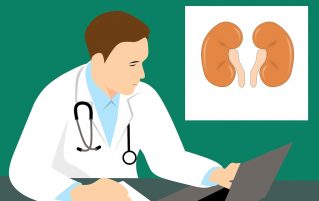How to work with Homeostasis: Part 3

Homeostasis is the regulation of a constant internal environment. Some of the internal conditions we regulate include blood glucose, body temperature and water content. The kidneys are a vital part of this.
An adult’s kidney is the size of a fist, and weighs around 140 grams. That amounts to only about 0.5% of our entire body weight. However, it is an amazing organ, so amazing that you only actually need about 75% of one kidney to keep you alive. And if you are born without one of your kidneys, then the other one will grow more, until it weighs the same as two kidneys! Inside the kidneys, there are millions of tiny filtering units known as nephrons. These are essential, as they help remove harmful toxins from your body. If all the nephrons were stretched out, they would go on for around 5 miles.
All of the blood in your body travels through the kidneys. In fact there is a higher blood flow through your kidneys, than the brain or the liver! Around 20 to 25% of blood from the heart travels to the kidneys to be filtered. Your blood is being filtered over 4o times per day.
The urine produced in the kidneys will then travel to the bladder, which can hold up to 500 ml of urine. The bladder does not send signals to the brain telling you to go to the toilet until the bladder is half-full. We get rid of between 1 and 1.5 litres of urine every day. Unfortunately, if things go wrong in your kidneys, it can be very painful. Crystals, formed from waste products in the blood can build up inside the kidneys. These are kidney stones. Usually they are too big to pass out naturally, even though only a few millimetres in diameter. But apparently, the largest kidney stone ever removed was over half a foot in diameter – the size of a coconut!!
 GCSE scientists – if you are studying GCSE science or A’ Level Biology, you need to know all about osmo-regulation, how our body maintains the same levels of water. To help you understand osmo-regulation, check out Part 3 of our “How to” revision guide on Homeostasis.
GCSE scientists – if you are studying GCSE science or A’ Level Biology, you need to know all about osmo-regulation, how our body maintains the same levels of water. To help you understand osmo-regulation, check out Part 3 of our “How to” revision guide on Homeostasis.
It explains:
- Why we need to maintain the levels of water in our blood
- How our body can detect changes in water levels
- How our body responds to either an increase or decrease in water levels
- What happens when our body cannot manage water levels effectively anymore
- How we can manage kidney disease
This guide will help if you are studying homeostasis for your GCSEs, and is also suitable for A Level students, as sections of the guide go “beyond GCSE”. It includes some example GCSE and A Level questions with answers at the end, so you can check your understanding of osmo-regulation.
Click on the picture below to view our guide.

Come back and check our
blog page for more resources to help you improve your understanding of different topics in various subjects.
If you found this useful and think you would benefit from some additional help please contact us.
We welcome guest bloggers.
GCSE scientists – if you are studying GCSE science or A’ Level Biology, you need to know all about osmo-regulation, how our body maintains the same levels of water. To help you understand osmo-regulation, check out Part 3 of our “How to” revision guide on Homeostasis.






